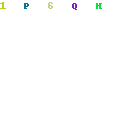
The History of Horimono
The art of Japanese tattoo has been traced back as far as 5,000 B.C. It is very possible that it existed well before this date, but this is as far back as claims can be backed up with physical proof. Clay figurines that date back to the 5th millennia B.C. have been found with their faces painted or engraved to represent tattoo markings. As far as historians and archeologists can tell, these tattoos are believed to have held a special religious or magical meaning to their bearers.
The first written record of Japanese tattoos appeared much later, in a Chinese dynastic history that dates to the year 297 A.D. In it, the Chinese reflected that the Japanese “men young and old, all tattoo their faces and decorate their bodies with designs.” This was indeed odd to their Chinese neighbors who considered the art to be a sign of barbarity, and was only used by them as a form of punishment.
But, years passed, and the Chinese cultural influence definitely swayed popular Japanese thought. By the year 700 A.D., the art of tattoo had become increasingly unpopular, and it didn’t take long to become a common form of punishment for criminals and a way to easily identify outcasts. People with these tattoos were faced with permanent ostracism by their families and communities. While sought out as a way to identify and control outcasts and criminals, this practice soon led to problems for the Japanese government. Many of the outcasts with tattoos were known as ronin (or samurais without masters). In order to survive, these highly skilled warriors joined together into organized gangs. These gangs are what formed the roots of the yakuza, the centralized organized crime leader in twentieth century Japan.
It wasn’t until the eighteenth century that traditional Japanese tattoos again had the chance to flourish. It was during the later half of the Edo period, and the feudal system had begun to deteriorate, leaving the people in search of heroes and leading them back to the wonders and hope of their folklore. Soon, the art of tattoo began turning up again and again, usually depicting designs from Japanese folklore and religion. Popular artwork included dragons, giant snakes, Chinese lions, the Buddha, Fudomyo (the Japanese god of fire), Fujin & Raijin (the gods of wind and lightening) and Kannon, the goddess of mercy. Other common subjects for Japanese tattoo designs included the traditional watercolors, wood-cuts and picture books of the era.
Tattoo artists tended to be artists who had before created wood-cut designs, but had instead exchanged their blades and blocks for needles and pressed charcoal ink. As the art gained popularity, Edo began a tradition of what we would call tattoo conventions that have been taking place there now for over 150 years!
However, while all of this was going on, it was still not “legal” per se. The art of horimono continued to be forbidden (or at least highly frowned upon) by the government up until the mid 20th century. The prohibition was finally lifted in the year 1948. But, even today, Japanese tattoo still has a certain amount of stigma attached to it, and for those natives who do opt for horimono, their beautiful designs and creations are usually inked in a place that it won’t be easily noticed by others, like a sleeve the upper arm area, and, more generally, any area commonly covered by clothing.
But regardless of its popularity in its native land of Japan, the traditional art of Japanese tattoo is free to make leaps and bounds of popularity in the US and other western countries and cultures.












No comments:
Post a Comment